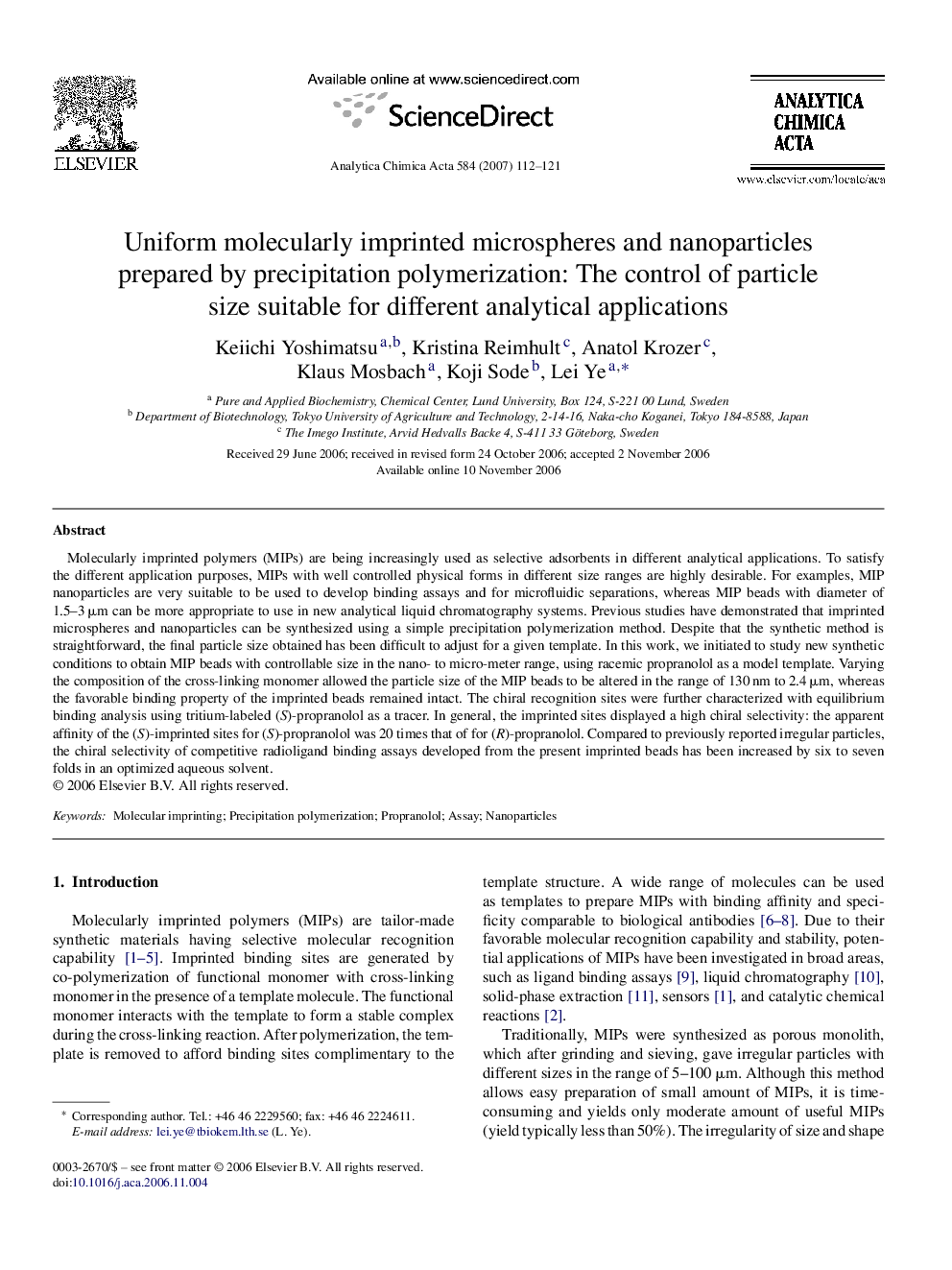| Article ID | Journal | Published Year | Pages | File Type |
|---|---|---|---|---|
| 1171257 | Analytica Chimica Acta | 2007 | 10 Pages |
Molecularly imprinted polymers (MIPs) are being increasingly used as selective adsorbents in different analytical applications. To satisfy the different application purposes, MIPs with well controlled physical forms in different size ranges are highly desirable. For examples, MIP nanoparticles are very suitable to be used to develop binding assays and for microfluidic separations, whereas MIP beads with diameter of 1.5–3 μm can be more appropriate to use in new analytical liquid chromatography systems. Previous studies have demonstrated that imprinted microspheres and nanoparticles can be synthesized using a simple precipitation polymerization method. Despite that the synthetic method is straightforward, the final particle size obtained has been difficult to adjust for a given template. In this work, we initiated to study new synthetic conditions to obtain MIP beads with controllable size in the nano- to micro-meter range, using racemic propranolol as a model template. Varying the composition of the cross-linking monomer allowed the particle size of the MIP beads to be altered in the range of 130 nm to 2.4 μm, whereas the favorable binding property of the imprinted beads remained intact. The chiral recognition sites were further characterized with equilibrium binding analysis using tritium-labeled (S)-propranolol as a tracer. In general, the imprinted sites displayed a high chiral selectivity: the apparent affinity of the (S)-imprinted sites for (S)-propranolol was 20 times that of for (R)-propranolol. Compared to previously reported irregular particles, the chiral selectivity of competitive radioligand binding assays developed from the present imprinted beads has been increased by six to seven folds in an optimized aqueous solvent.
